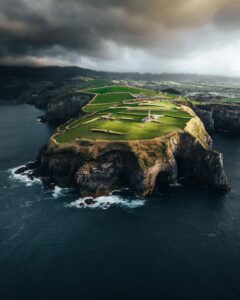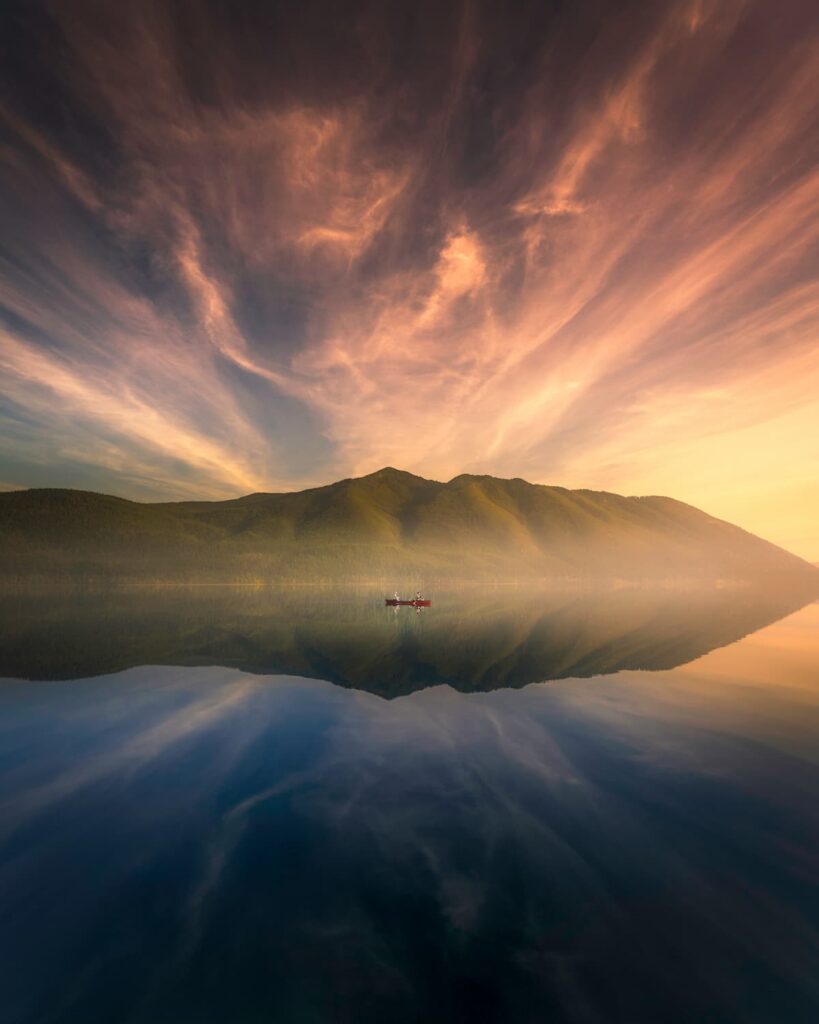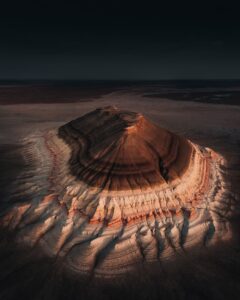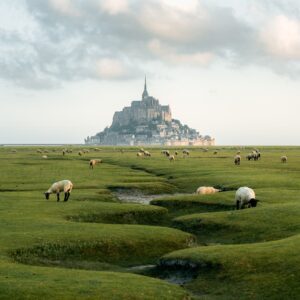
Photo tour in Azores, Portugal
Join us in the Azores for a unique photo tour, where you’ll elevate your creative skills with expert guidance from Ronald Soethje, Bruno Ázera, and Nomadict.
Inspired by the enchanting captures of the night sky from the Rockies’ summits, Ash embarked on a transformative photography journey, capturing the breathtaking beauty of Canada’s picturesque landscapes. Along this journey, Ash learned valuable lessons, from the importance of getting out to embracing a unique composition style. Ash emphasizes purposeful creativity, finding solace and joy in immersing oneself in nature. Join Ash on this inspiring voyage through the lens, where each image tells a story of connection and creativity.
My passion for photography was sparked when I picked up a copy of Summits and Starlights by photographer and local legend Paul Zizka. Capturing the night sky from the summits of the local mountains here in the Rockies was awe-inspiring. Having climbed and hiked some of the featured peaks, I was blown away by how Paul immersed himself in the landscape, at elevation, during winter, creating incredible compositions of the mountains and valleys, bathed in soft moonlight. It opened my eyes to what could be made using a camera and a wide-angle lens. And so began my journey. I joined some local workshops and was fortunate to visit some of the most amazing locations here in Canada, including Lake O Hara, Mount Assiniboine, the Icefields Parkway from Lake Louise to Jasper, etc. I’m extremely lucky to live so close to some of the most photogenic mountainous regions in the world.
I realized the profound impact when I understood that mere snapshots of my travels only documented scenes, lacking emotion or a true representation of nature’s essence. Inspired by others’ work, I yearned not just to capture landscapes’ beauty but also to evoke emotional responses in this two-dimensional medium. Despite not considering myself naturally artistic, I embraced technology, equipment, and post-processing software. This harmonious blend of art and science, using objective tools creatively, remains a deep passion in my photography journey.
Four valuable personal and professional lessons
1) Get Out! The more you get out, the more opportunities for great atmospheric conditions you will have. As a weekend warrior (I have a full-time job outside of photography), it’s often hard to commit every weekend, for sunrise and sunset, but making an effort to push yourself to get up and get out is the best way to put yourself in a position to capture great images.
2) Lose the tripod. I was in a workshop with Marc Adamus earlier this year and was amazed to learn he doesn’t use a tripod. With the remarkable progress in noise reduction software, you can push the ISO and conduct your fieldwork with much more fluidity. A tripod anchors us in position, and having the freedom to move around using the handheld camera opens up many opportunities for creative images. So, these days, I leave the tripod at home more often. Makes the pack lighter, too.
3) Composition is key. So many things are easy to address in the post-processing workflow, but the composition is often baked to the images on our SD Cards (possible except cropping). So, I’ve learned to pay attention to the edges, the isolation of subjects within my frame, and the priority of chosen subjects in my composition when out in the field. I’ve learned that a great image is often just a few inches away from an average picture.
4) Don’t judge yourself by the work of others. The main platforms’ algorithms feed us a never-ending highlight reel of the best of the best. It’s easy to lose confidence and enthusiasm when the imposter syndrome kicks in. Just be true to yourself. It’s OK to be inspired by your peers, but use it as fuel to push the boundaries of your creativity.
The image I captured that was lucky enough to win Best of the Week was simple – I think that is its appeal. I had taken a last-minute road trip from Canada to Montana very late in the fall. I think it was early to mid-October. We stayed on the east side of Glacier National Park, and the Going to the Sun Road, which links the east and west regions of the park, was already closed for the season.
I wanted to see Lake Macdonald, so we drove to capture the lake at sunset. Walking around, using the camera handheld, I photographed the lake, which was like glass, with a gorgeous sky and a red canoe floating through the idyllic scene. The image stayed in my library for a few months until I learned some new post-processing techniques from my time with Marc Adamus. These new techniques allowed me to edit the image in such a way as to leverage the simplicity of the composition but also showcase the wild colors of the sunset.
It was truly a spur-of-the-moment capture. The image only works with the canoe, so I was fortunate to be in the right place at the right time and realize the creative vision in the post.
The image selected as the weekly winner was a simple image to edit. The scene was simple; the water was flat and mirror-like, the light was soft (still some smoke from the wildfires), and the clouds were streaking perfectly over Belton Hill on the east side of the lake. I like to always respect and preserve the scene’s natural beauty in terms of hue and texture.
I needed to ensure the scene was free of distractions, so a good cleanup was required to remove imperfections in the water and the forest area in the background. The show’s star was the sky, anchored by the red canoe, and it was important to ensure the viewer’s eye was not pulled around the frame. I brought out the hues of the sky using ACR and cleaned up and softened the scene in PS, using a method that utilizes the history brush to amazing effect.

I don’t have a particular curated color scheme for my feed or portfolio. Instead, I have learned to use transitions to anchor an image and make it impactful – that may be considered my style. Whether big to small, warm to cool, dark to light, or levels of black, I find this a great way to guide the viewer through the images I create. Most of my pictures tend to be reasonably high contrast, but I try to use the contrast to highlight certain elements in the image.
Somebody I admire greatly once told me that a great landscape photograph must have good framing, layers, or leading lines. To that, I would add atmosphere or mood. A great image needs to invoke an emotional response from the viewer, and there is no better way to do that than by leveraging the atmosphere in a scene.
Important projects and future ambitions
My journey has taken me through the clichéd stages of a landscape photographer. As part of that journey, we get stuck in the trap of social media, feeling we need to post more often, hit iconic locations, and only make epic images.
I have learned more recently that I need a purpose outside social media platforms to express myself creatively. I have started to print my work, both for myself and others. You learn a lot about your creative processes and workflow when printing an image. It highlights even the slightest flaws that wouldn’t be noticed when viewed and scrolled past online.
This approach provides an often difficult feedback loop that reminds us and teaches us to slow down, to take our time, to edit with care and precision, and not to rush – things I now carry with me into the field.
I would love to see myself sharing my skills and experience with others, teaching the techniques I have learned along the way to bring the enjoyment of photography to others. I think there is great therapy in immersing yourself in nature, and to help teach some of the skills to capture those moments to others would be a great way for me to find purpose in the endless hours of being in the landscape, the wasted early mornings when the weather doesn’t cooperate and to the pleasure of seeing your best memories hanging on the wall, for all to see and enjoy.

Join us in the Azores for a unique photo tour, where you’ll elevate your creative skills with expert guidance from Ronald Soethje, Bruno Ázera, and Nomadict.

In this article, Forest shares how years of chasing scale, silence, and raw landscapes shaped his approach to photography, from the deserts of Kazakhstan to the volcanic ridges of Iceland. He talks about how he uses light, texture, and vast negative space to create images that feel both intimate and overwhelming.

Simon shares the journey behind his photography, from early inspirations to field techniques, editing, and the story of the winning shot that shaped his path.

In this article, Miro shares how his love for cinematic music evolved into a deep passion for photography and how he uses light, color, and atmosphere to turn the streets of Prague into living film scenes.

In this article, Stefanie reveals how her background in physics sparked her passion for astrophotography and how she blends science with creativity to capture the beauty of the night sky. Readers will discover her approach to color, contrast, and editing, as well as her aurora photography workflow.

Spanish photographer Yhabril captures the profound connection between humans and the mountains that shaped him. Growing up in the Pyrenees, his work bridges outdoor sports, landscapes, and celestial scenes — often blending athletes, moonlight, and wilderness into striking visual stories.

In this article, Ariane shares how photography helped her navigate personal challenges, connect authentically with people and animals, and develop a philosophy rooted in empathy and artistic freedom. Readers will also discover her ethical approach to wildlife photography and her trusted equipment for both camouflage techniques and cameras.

Discover how to photograph Dutch tulip fields in their most magical light. From choosing the right gear and lenses to mastering composition, color, and aerial perspectives, this guide shares creative techniques to capture the beauty of the Netherlands’ tulips. Learn how light, color grading, and proportion bring emotion into every frame.
